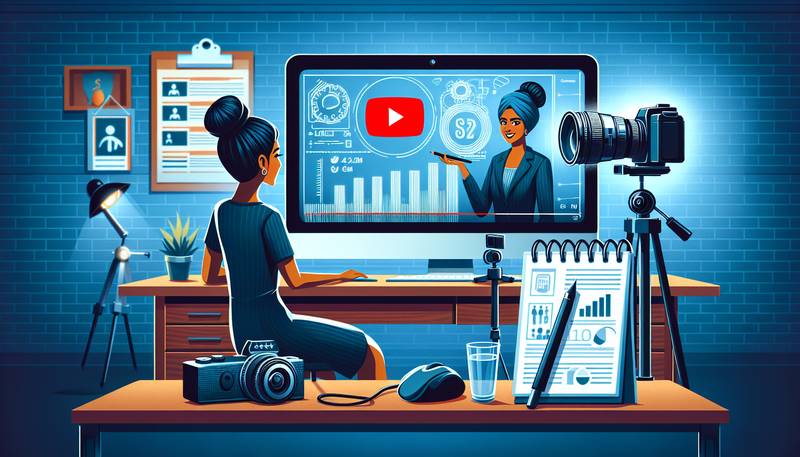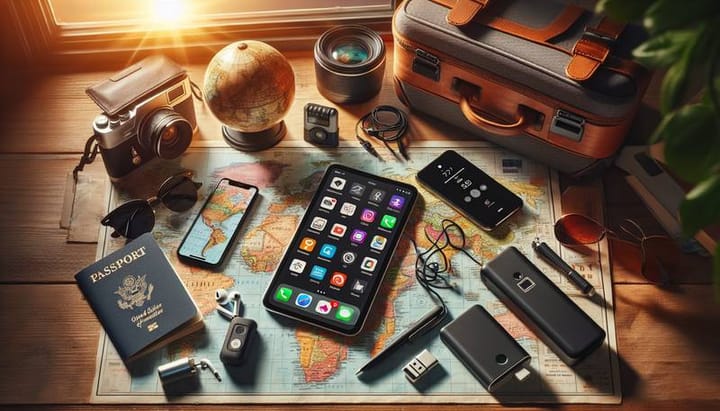Setting Up a YouTube Channel: Tips and Best Practices

Starting your own YouTube channel can be an exciting venture, but it can also be quite daunting if you're not sure how to begin. The platform is a vast ocean of diverse content, and standing out might seem like finding a needle in a haystack. Don't fret, though, because with the right guidance and know-how, you'll quickly be on the path to YouTubing success. This guide will equip you with essential tips and best practices for establishing a YouTube channel that stands a cut above the rest. From finding your niche to branding your content and optimizing for SEO, we'll cover it all. So let's dive in, and transform that YouTube channel dream into a reality.
Choosing Your Niche
Before you start thinking about logos or video editing software, you need to decide what your channel will be about. This step is crucial—it's about finding the intersection of what you're passionate about and what people are interested in watching. Start by brainstorming topics you have a keen interest or expertise in. Next, research the current market; look at popular channels in your potential niche for a sense of the competition and demand. Consider niches where you can offer something unique. The key to a successful niche isn't always about choosing something no one else has covered, but rather tackling a subject from a new angle or with a fresh perspective. Whether it's a cooking channel where you recreate historical recipes, a tech channel with a focus on sustainability, or a comedy channel that wittily unpacks current affairs, ensure your chosen niche is one that you can consistently produce content around and something that excites you.
Creating a Compelling Channel Name and Banner
Your channel name and banner are the first things potential subscribers encounter, so you need to make them count. They are the bedrock of your brand identity on YouTube. Your channel name needs to be memorable, straightforward, and give a hint of what your content is about. Avoid complex spellings that are hard to search for and try including keywords related to your niche. Your banner, on the other hand, is your billboard. It's a visual representation of your channel's identity. It should be eye-catching, high-quality, and align with the aesthetic of your content. Make sure the font is readable, and the design works well on different devices, as YouTube banners can look different on a smartphone, tablet, or PC. Tools like Canva or Adobe Spark offer user-friendly templates to design your own YouTube banner, even if you don't have graphic design experience. Remember to adhere to YouTube's banner size guidelines to ensure your banner looks great no matter how viewers are watching.
Optimizing Your Channel for SEO
Search Engine Optimization (SEO) is crucial for growing your YouTube channel. It helps your videos appear in search results and recommended video sections, thus attracting more viewers. Start by conducting keyword research related to your niche. Tools like Google's Keyword Planner or TubeBuddy can help you find popular search terms to include in your video titles, descriptions, and tags. Your channel's "About" section is also prime real estate for SEO. Make sure it contains key information about the type of content you produce and sprinkle in relevant keywords. However, be careful not to stuff your descriptions with keywords to the point that it feels unnatural—YouTube is savvy to this and may penalize your channel. Closed captions are another secret weapon for SEO; they make your content accessible to a wider audience, including viewers who are deaf or hard of hearing, and they also provide text that can be indexed by search engines.
Creating High-Quality Content
Quality content is the cornerstone of a successful YouTube channel. This doesn’t necessarily mean investing in the most expensive equipment right away, but rather understanding the fundamentals of good video production. Start with what you have, be it a smartphone or an entry-level camera, but ensure your video and audio are clear. As your channel grows, you can reinvest in better equipment.
Framing and lighting can make a world of difference in video quality. Explore basic videography principles such as the rule of thirds, proper headroom, and lead room. For lighting, ensure your face is well-lit without harsh shadows. Natural light is your best friend, but if you're filming at night or in a dark room, consider a basic ring light or softboxes. Audio clarity is equally important, as poor sound can turn viewers off even the most visually stunning video. A simple lapel mic can drastically improve sound quality.
Excellent video editing can elevate your content, too. There are several free or affordable editing software options that are user-friendly for beginners. Take the time to cut out mistakes or long pauses, add engaging graphics or text overlays, and ensure your video flows well. And remember, content quality isn't just about the look—it's also about the substance. Make sure you’re providing value, whether that's entertainment, information, or both.
Building a Community
Equally important as producing content is engaging with your audience and nurturing a community around your channel. YouTube is, at its core, a social media platform, and interaction is key. Encourage viewers to comment on your videos, and make it a point to respond where you can. This engagement can increase viewer investment in your channel and foster a sense of camaraderie among your subscribers.
Another way to build community is through consistent branding across your social media platforms. This doesn’t mean just having the same profile picture and banner, but also interacting with your audience on platforms like Twitter, Instagram, or Facebook. Create related content like behind-the-scenes posts, polls about what your next video should be, or start discussions about topics relevant to your niche.
Collaborations with other YouTubers can also help you tap into new audiences and add variety to your content. Reach out to channels that complement yours and express genuine interest in working together. It's a win-win—you provide fresh content for your audience and get exposed to theirs.
Monetizing Your Channel
Monetizing a YouTube channel can seem like the ultimate goal, but it's important to approach this step with a strategy. First, you’ll need to meet YouTube's Partner Program requirements, which, as of this writing, include having at least 1,000 subscribers and 4,000 watch hours over the past 12 months. Once you're eligible, you can monetize through ads, but this is just the start.
Consider diversifying your revenue streams. This could include affiliate marketing, where you promote products and earn a commission on sales, or selling your own merchandise. Crowdfunding through platforms like Patreon, where viewers can pledge a certain amount per month, can also be a viable option. For this to succeed, you need to provide value to your patrons, perhaps through exclusive content or merchandise.
Remember, focus on building your audience first and the money will follow. The more viewers you have, the more attractive your channel will be to sponsors. But always prioritize your viewers' experience—ads, sponsorships, and promotions should feel natural and not detract from the content your viewers love.
Conclusion
Creating and running a YouTube channel is an adventure that requires creativity, patience, and persistence. From choosing the right niche and creating quality content to building a community and eventually monetizing your channel, each step is crucial in its own right. Remember that success won’t happen overnight—it's a gradual process that will test your passion and dedication.
Never stop learning and adapting. The YouTube landscape is constantly evolving, and what works today may not work tomorrow. Stay up to date with the latest trends, listen closely to your audience, and always aim to improve.
Most importantly, have fun on this journey. Because when you truly enjoy creating content, your audience is far more likely to enjoy watching it. As you apply these tips and best practices, believe in yourself, because your unique perspective and voice have a place on YouTube. So go forth, create, engage, and grow—your YouTube channel awaits!


